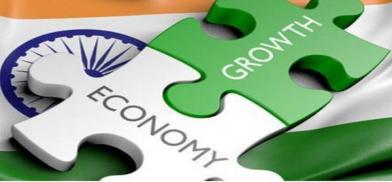India will remain the fastest-growing major economy; Bangladesh to be the fastest-growing economy after India in South Asia
IMF’s projection for India is slightly higher than the World Bank’s 8 per cent earlier this month. The series of World Bank reports also had India as the fastest-growing major economy, with China following it at 5 per cent

Amid a gloomy outlook for the global economy battered by the Russian invasion of Ukraine just as it was emerging from the Covid pandemic, India will remain the fastest-growing major economy, according to two important international financial institutions. India’s Gross Domestic Product is projected to grow by 8.2 per cent this fiscal year and keep the top spot despite the International Monetary Fund shaving off just under a percentage point, according to its World Economic Outlook (WEO) report released on Tuesday.
China, which is experiencing a slowdown, is the second-fastest-growing large economy at 4.4 per cent this year.
In South Asia, WEO expects Bangladesh to be the fastest-growing economy after India, at 6.4 per cent this year and 6.7 per cent next year.
The IMF gives a bleak projection for Sri Lanka, which is in the throes of a severe economic crisis: A growth of 2.6 per cent this year and 2.7 per cent.
For Pakistan, IMF projects 4 per cent this year and 4.2 per cent next year.
Nepal’s growth projection is 4.1 per cent this year rising to 6.1 per cent next year; Maldives’s is 6.1 per cent this year and 8.9 per cent next year, and Bhutan’s 4.4 per cent this year and 4.5 per cent next.
The IMF took a pass on making any projections for Afghanistan which was taken over by the Taliban creating chaos.
The IMF growth projection for India this fiscal year is below the 8.9 per cent growth it achieved last year. It is expected to moderate to 6.9 per cent next fiscal year and long-term to 6.2 per cent in 2027 – but still the highest for large economies.
IMF’s projection for India is slightly higher than the World Bank’s 8 per cent earlier this month. The series of World Bank reports also had India as the fastest-growing major economy, with China following it at 5 per cent.
Paradoxically, both those projections are higher than last week’s Reserve Bank of India’s projection of 7.2 per cent for 2022-2023, down from the earlier 7.8 per cent.
IMF’s Chief Economist Pierre-Olivier Gourinchas blamed the cut in IMF’s growth projection for India on the multifarious effects of the Ukraine conflict.
“India is an oil importing country and so is suffering like many other countries as a consequence of the war and negative terms of trade shock”, he said on Tuesday.
“Higher food and energy prices are weighing down on their trade balance”, he said.
“And at the same time, India's external demand is also suffering because the rest of the world is growing at a slower rate. So, we see some softening coming from external demand”, he added.
Looking at the global picture, the IMF’s WEO said, “Economic damage from the conflict will contribute to a significant slowdown in global growth in 2022”.
The WEO projects the world economy to grow by 3.6 per cent, a downgrade of 0.8 per cent from the 4.4 per cent made in January.
The US is projected to grow by 3.7 per cent this year, and the Euro area by 2.8 per cent.
“War-induced commodity price increases and broadening price pressures have led to 2022 inflation projections of 5.7 per cent in advanced economies and 8.7 per cent in emerging market and developing economies –1.8 and 2.8 percentage points higher than projected last January”, the WEO said.
The IMF also warned that globally, “the war in Ukraine has increased the probability of wider social tensions because of higher food and energy prices, which would further weigh on the outlook”.
Consumer prices in India are projected to increase 6.1 per cent this fiscal year, up from the 5.5 per cent last year and moderating to 4.8 per cent next year.
Among other prognostications for the Indian economy, the international consulting company Deloitte in a report this month expected it to grow betweem 8.3 per cent to 8.8 per cent during 2021–22, and more than 7.5 per cent next fiscal year and 6.5 per cent in the following period.
“India’s underlying economic fundamentals are strong and despite the short-term turbulence, the impact on the long-term outlook will be marginal”, the report said.
While the invasion of Ukraine has affected India, Deloitte saw a bright side too.
It said, “Several spillover effects of geopolitical conflicts could enhance India’s status as a preferred alternate investment destination. Global in-house centres and multinationals, for instance, may prefer India over Eastern European markets (especially those that border Ukraine) to shift their current operations or open new facilities”.
(SAM)










Post a Comment